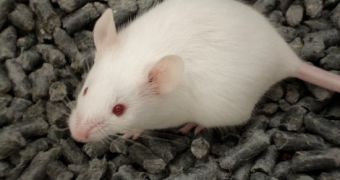A recent paper documents the use of football-shaped artificial particles to shrink the size of tumors in mice diagnosed with cancer.
Scientists explain that, when introduced in the rodents' bodies, the particles impersonated a type of cell known to play a crucial role in immunity, and taught the animals' immune system how to destroy cancer cells.
By the looks of it, researchers have for some time been trying to figure out a way to use artificial particles that mimic the behavior of certain immune cells, known as antigen-presenting cells, to treat cancer.
However, previous investigations have focused on using basketball-shaped particles.
According to Jordan Green with the Hopkins University School of Medicine, football-shaped ones work better.
“The shape of the particles really seems to matter because the stretched, ellipsoidal particles we made performed much better than spherical ones in activating the immune system and reducing the animals' tumors,” the researcher said, as cited by EurekAlert.
“When immune cells in the body come in contact, they're not doing so like two billiard balls that just touch ever so slightly. Contact between two cells involves a significant overlapping surface area. We thought that if we could flatten the particles, they might mimic this interaction better than spheres and activate the T-cells more effectively,” the researcher further detailed.
The same source details that these artificial particles are basically squashed spheres whose surface displays bits and pieces of tumor proteins together with so-called molecular danger signals.
This is precisely what antigen-presenting cells that naturally occur in the body are supposed to do: engulf invaders and then display warning signals telling the T-cells that they are carrying something that has to be destroyed.
When the immune cells of the mice used in these experiments came across these particles, they reacted to the danger signals and attacked them. By doing so, they basically taught themselves how to recognize and destroy cancer cells.
What's more, it appears that all it took was a few encounters between several such particles and a few T-cells for the rodents' organism to go into overdrive and start producing more immune cells than it normally would have. Needless to say, this upped their bodies' cancer fighting ability.
Researchers hope that, at some point in the future, such particles will effectively treat cancer in human patients.
A detailed account of this series of experiments and their outcome was published in the journal Biomaterials this past October 5.

 14 DAY TRIAL //
14 DAY TRIAL //